This week Google showed how animals can be viewed online. For this, nothing is needed except a smartphone with a camera. Here it is, AR in action. We also found out the date of the presentation of the new OnePlus 8, which raises some questions. Especially its price tag. However, many will definitely want to buy it. Not without news from Huawei. Finally, it will be possible to pay by phone again, even after Google sanctions, which have not yet thought to be removed. If you missed something from this news, or want to talk about it again, we will be glad to present you our traditional news digest. Moreover, we have other news.

Something from this week we have left
How to watch animals in 3D from Google from a smartphone
Despite the fact that it was Apple who first announced their desire to develop augmented reality, Google managed to plug it in the belt. While the Cupertino-based company was working on improving the Ruler app and mastering the LIDAR technology, the search giant just took and showed that augmented reality can really be useful in everyday life. An excellent example of this is the ability to search Google for three-dimensional images of animals, place them right in your apartment, studying the features of their appearance and habits.
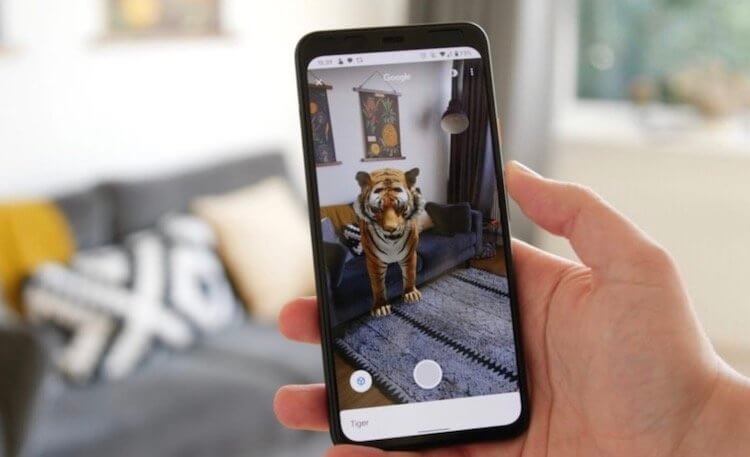
Want to see life-size animals? It's real
In fact, Google announced the appearance of three-dimensional animal figures in its corporate search engine last year at the Google I / O conference, but then their range was rather scarce. Since then, the designers of the search giant have drawn many more shapes that are now available to everyone, well, or almost everyone.

Tell me, does it look like a real one?
What animals are on Google
- Alligator
- Angler (fish)
- Brown bear
- Cat
- Lynx
- Labrador
- Pug
- Rottweiler
- Duck
- Eagle
- Emperor penguin
- Goat
- Hedgehog
- Horse
- a lion
- Panda
- Macaw
- Raccoon
- Octopus
- Shark
- Scottish pony
- Snake
- Tiger
- Turtle
- Wolf
As you can see, the list of available models is quite extensive and includes many popular animals. Nevertheless, it is obvious that it is too early to stop working on its expansion, because only the class of mammals consists of more than 5,000 species, not to mention reptiles, fish, worms and insects. This is a lot of work, since Google will not only have to digitize the figures, but also work out their smallest details, dimensions, habits and achieve a realistic effect, for example, getting rid of sinking into textures and other problems.
Finding three-dimensional shapes of animals is quite simple. Google lets you access them directly from search.
- Enter the name of the animal from the list into Google, for example, 'tiger in 3d' or simply 'tiger'
- Scroll down to the tab with a proposal to view a life-size model of an animal and click 'View in 3D';
- In the window that opens with a three-dimensional figure of an animal, click on the 'Place at home' button;

Animals in augmented reality are pretty realistic
- Point the smartphone camera at the floor and turn it as shown on the screen;
- You can walk around the animal from all sides, approach and move away from it – it will not disappear, even if you move the camera to the side.
I tested the function of placing animals in 3D in augmented reality on three devices and came to the conclusion that this is not a story for everyone yet.
On my iPad 2017, the tab with the three-dimensional shape of animals did not appear even once, regardless of the browser I was using. I tried to get the desired result in both Safari and Google Chrome, but it was all in vain.

Watching animals in 3D is easy.
On Honor View 20, which seems to be considered the flagship of last year and is equipped with quite powerful hardware, Google showed tabs for all animals. But whenever I clicked the Watch in 3D button, Chrome would throw an error. Then I tried to do the same through Yandex Browser, but I got the same result. Apparently, the smartphone is in conflict with the 3D figure. It is possible that Google has specifically blocked access to them for smartphones Huawei.
But on the Galaxy A51, everything went much better. In a matter of seconds, I was able to open the three-dimensional figure of a tiger and place it in the apartment. The model turned out to be quite realistic, but only from a distance. If you get closer to it, the picture began to grain like when using the digital zoom. However, I admit that it was just the hardware of the smartphone that could not cope with the processing of the figure.
What can I say? In fact, the idea of viewing animal figures in augmented reality is very cool and useful. This function will especially appeal to children who hardly had the opportunity to examine dangerous predators so closely and observe their behavior. Another thing is that due to the limitations of an unknown nature, not everyone will be able to test AR animals, and this is a shame.
Huawei has smart charging like Apple
The battery is perhaps the most vulnerable component of any smartphone, which even the display cannot compete with. After all, if the display does not wear out over time, unless it is broken, then the more charging sessions the battery goes through, the worse it will hold energy. Some users have already got used to this and now consider the battery solely as a consumable, but most are still not ready to put up with the need to service their smartphones. Therefore, Huawei added a special technology to the firmware of branded devices, which will minimize the negative impact on their batteries.
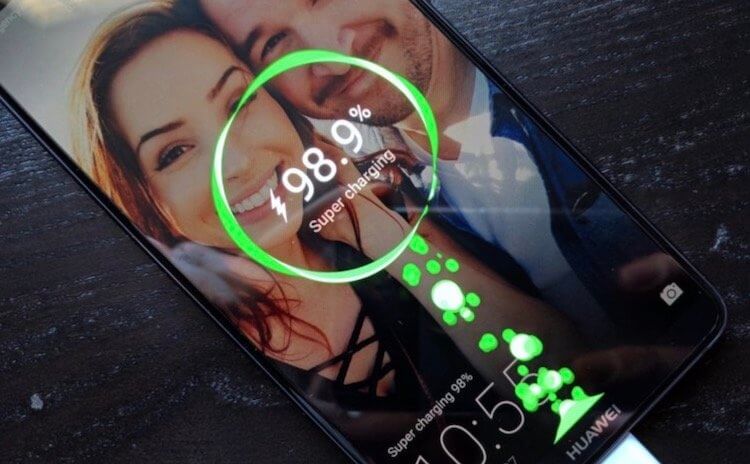
Smart charging prevents premature battery wear
The technology in question is called Smart Charging Mode. That is, it is a kind of smart mode that allows you to extend the life of the battery, preventing damage and loss of effective capacity from misuse. The operation of the mode is based on artificial intelligence, which allows it to study the user's habits in charging the smartphone, calculate the time that the device spends at the outlet, and based on this data, calculate the charging speed, changing it up or down.

Slow charging harms your smartphone much less than fast charging
Of course, the mode cannot make the charging speed higher than that provided by the manufacturer, and it is not intended for this. The goal pursued by the developers Huawei was, on the contrary, to reduce the speed at the moments when the smartphone spends a lot of time on charging. This usually happens at night. Users put the device on charge before going to bed and take it off only in the morning. As a result, it charges in an hour and a half, and the rest of the time it simply maintains a 100% battery charge, which has a negative effect on it.
The fact is that all the time while the smartphone, being charged, is connected to the outlet, it experiences micro-loss of energy, which it has to constantly replenish. If the unit is left at the outlet overnight, the effect will be negligible, but if this continues on a regular basis, the battery will begin to degrade much faster than if the unit was disconnected from the mains immediately. And the smart charging mode allows you to charge your smartphone not quickly, but with a low current all the time it is at the outlet.
This mode works in the same way for Apple. The company added it to iOS 13 and called it Optimized Charging. It also calculates the time of the charging sessions and effectively slows down the current so that iPhone, which was left at the outlet overnight, is charged in time for the morning. This prevents premature degradation of the battery, allowing it to last longer. And since iPhone start to slow down if their battery wears out, the benefits of Smart Mode become invaluable to them. But if the Apple mode supports all iPhone compatible with iOS 13, then Huawei still has it only in Mate 30/30 devices Pro and Honor V30.

Even Elon Musk believes that there is no need to charge the battery up to 100%
However, the smart charging mode from Huawei will have one more function besides deceleration. Judging by the description, it will allow, in principle, to block the supply of energy when the battery reaches 80%. It's a cool idea that the Chinese probably got their hands on from Tesla. Elon Musk has repeatedly said that charging any battery to 80% on a regular basis has less negative impact on it than if it was charged to 100%. That is why the Tesla app has a special function that allows you to set a limit after which charging will automatically stop.
While it seems that no smartphone manufacturer other than Huawei has implemented the same feature yet, independent developers have long been offering apps to automatically stop charging. Personally, at one time I used the AccuBattery application (download), which not only offered the function of setting limits, but also recommended not to charge the battery more than 80% at a time in order to minimize the negative impact and delay its aging. However, due to the fact that I started using AccuBattery only in the third year of using my smartphone, I did not notice a positive effect from its work.
Samsung will redeem its smartphones from users
Samsung has launched a test program to buy back its own smartphones from users. The company promises to pay 50% of the retail price of the device if the owner returns it within two years. So far, the program applies only to smartphones of the flagship Galaxy S 2020 line of the year, and the geography of its availability is still limited only to the North American markets. However, if it proves to be a sufficiently effective way of attracting buyers, it is possible that it will be launched in Russia as well, as has happened in the past.

Samsung has figured out how to boost sales of its smartphones. It seems that no one has done it yet
Yes, Samsung's goal is to attract consumers. The fact is that the demand for the Galaxy S20 in almost all countries of the world turned out to be significantly lower than at the time for the Galaxy S10. The complex epidemiological situation in the world caused by the coronavirus has affected. Because of this, many of those who could afford a fresh flagship from Samsung changed their priorities and began to think no longer about buying new equipment, but about their own survival, which is more than justified in the current conditions.

If you have the opportunity to return your smartphone back to the store for half the price even after two years, you will most likely come to this store again.
The Galaxy S20 buyback program, despite its apparent similarities, actually has nothing to do with a trade-in. Firstly, trade-in payments are calculated individually in each specific case, and upon redemption Samsung promises a strictly fixed amount of 50% of the price. Secondly, trade-in allows you to hand over devices in almost any condition, while Samsung requires that the hand-over devices be in excellent condition, allowing only natural wear and tear. Thirdly, a buyback program, unlike a trade-in, allows you to get real money without having to buy a new smartphone.
In fact, the launch of the buyback program is even more significant for the market than it might seem at first glance. It can completely kill the secondary market, and in the case of Russia, it can also shatter the gray.
We have repeatedly proved that flagship smartphones running Android – and especially Samsung devices – can lose from 30 to 50% in a year. The same Galaxy S10 fell in price by almost 40% from the initial indicators only in the first six months after the release.

Galaxy S10 in the gray market is 40% cheaper than the official
Of course, the Russian office of Samsung has nothing to do with this, because the decline was due to the servo carriers, which have the opportunity to purchase equipment abroad and not pay taxes and import duties. However, this does not negate the fact that buying a Galaxy S10 on the secondary market becomes almost meaningless in the presence of a gray market.
The thing is that both in gray retail and on the secondary market, purchases are made only for cash. That is, no installments or loans, as a rule, are provided. And if so, then a user who wants to save money on buying a smartphone, but at the same time has the opportunity to pay the conditional 30-40 thousand rubles, is unlikely to agree to buy a smartphone from his hands, but rather turn to servo carriers.
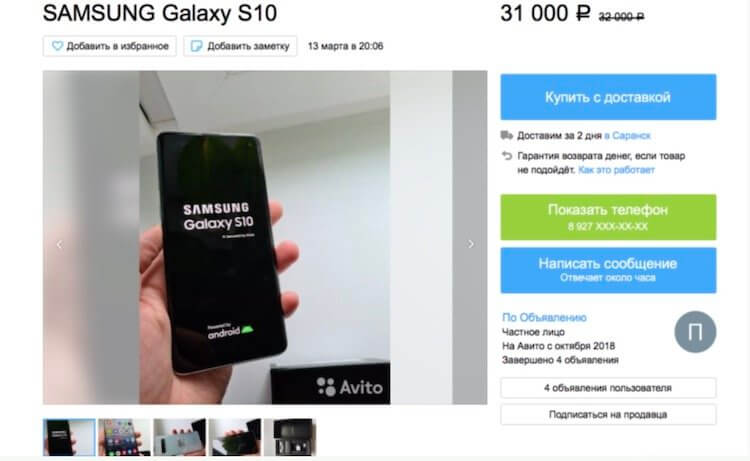
This man bought a Galaxy S10 for 70 thousand at the start of sales, and now sells it for 30. It would be better if he gave it to Samsung
After all, there he will be sold not a used smartphone, but a completely new one – with all the consequences in the form of a one-year warranty and serviceable components that have not been repaired or replaced. Therefore, those who are interested in selling on their own are forced to lower prices even more in order to somehow resist the serovars. However, thanks to the buyback program, it will be easier and more profitable for users to hand over a Samsung smartphone than to sell it on their own, losing money on it.
It may seem that Samsung itself, most likely, this program is not very profitable, because in this case it will, if not incur losses, then at least receive many times less profit. However, by extending the buyback to new smartphones, the company, in fact, will tie up the majority of users who have issued a refund, because in this case, they will almost certainly want to repeat the experience and buy a new smartphone from Samsung again, having the opportunity to return it again. .
Paying by phone again soon Huawei
Even though Huawei cannot officially work with Google services, they can still be used. Services do not work exactly natively, at the system level. Well, of course, there is no Google app store. There are varying degrees of success for ways to return Google services to your Huawei or Honor. As a last resort, they can be used in a browser. But until that time it was not possible to solve the problem with payment. Smartphones of these brands could never be made to work with payment systems. But now the time has passed and now users Huawei will be able to pay by phone again. Everything is very simple.

The long-awaited feature will return to smartphones Huawei very soon.
So far, users do not have such an opportunity, since the company came under US government sanctions and cannot work with Google and its services. Without going into details, Google Pay was the only feature that couldn't be returned to smartphones Huawei. Now there is an alternative.
It is called Wallet Pay. From the name it is not difficult to guess that the service has Russian roots. This is indeed the case and the payment option is implemented on the basis of the “Wallet” application, which allows you to store discount, bonus and other cards that people usually carry in their wallets in one place. Very soon it will be possible to add a payment card to the application. And you can download the application itself from AppGallery right now.
It's too early to talk about Huawei Pay, but the contactless phone payment feature will be available to users starting April 10, 2020. It can be used by owners of smartphones Huawei of the P40 series who have a card from one of 40 partner banks. Among them are all the largest and most popular: VTB, Alfa-Bank, Raiffeisenbank, Tinkoff, Otkrytie, Rosselkhozbank and others. Oddly enough, Sberbank, which everyone has, is not yet supported.
The payment function will not be limited to the territory of Russia. It will be possible to pay for purchases in this way all over the world – wherever bank cards are accepted. For payment, as in smartphones with Google Pay, NFC technology will be used.
The only limitation is that for now only MasterCard cards are supported. Perhaps, support for other payment systems will appear later.
If you have Google services preinstalled on your phone, you can pay for purchases using Google Pay and NFC. But if your smartphone is subject to sanctions, then first you will need to download the “Wallet” application from AppGallery. In new devices, it will be preinstalled (while it needs to be downloaded). You just need to go to the application, press the plus sign and enter your bank card details. The whole process will take less than a minute. Unfortunately, on Huawei P40 Pro I was not able to test this. The application crashed. Perhaps the point is in the raw firmware, or there are problems with the application itself, but this should be fixed. I am more inclined to the first, as I had difficulties with other applications on this particular smartphone.
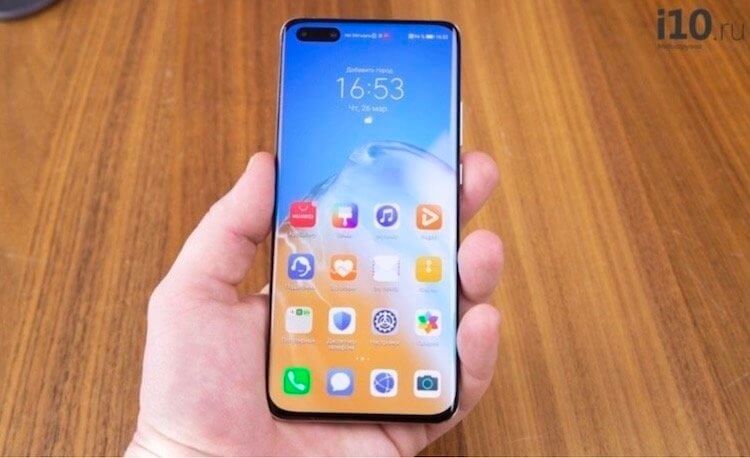
This smartphone will be able to contactlessly pay for purchases.
It is difficult to say exactly how this process works, we will have to wait until April 10th. But, most likely, additional action will be required to pay. You will need to launch the application using a fingerprint or face scan for identification. After that, it is already customary to just put the smartphone to the terminal.
The wallet is a very famous cross-platform application that is available for both Android and iOS. It is also available on Android in the branded app store Huawei.
The “Wallet” application is used to store bank cards, discount cards, certificates and coupons. Some smartphones Huawei and Honor already have it preinstalled. For example, in Huawei P40 Pro, which I am currently using.
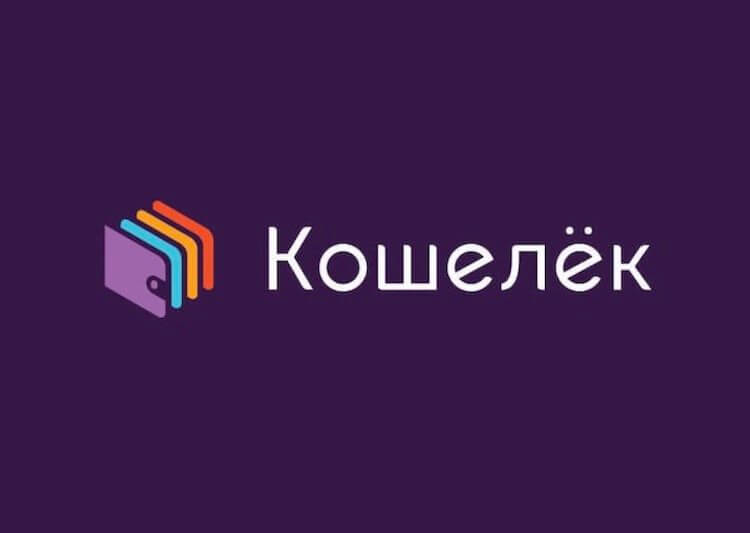
On the basis of this service, telephone payment functions will be implemented Huawei.
The service audience is 12 million people, who have linked more than 190 million cards. The statistics are impressive, but there is a feeling that now there will be even more users if this method remains the only way to pay with smartphones Huawei and Honor.
Sometimes it is really much easier to simply attach a bank card to the terminal. But we are all accustomed to the fact that the smartphone has become our companion for every day. We wake up with him, we use it before bed and always carry it with us. Somewhere I even came across statistics that the overwhelming majority of people never once in a day find themselves more than five meters from their smartphone.
Here is the answer. Leaving home, you can forget your card, and the presence of keys and a phone in your pocket is the first thing everyone checks. Even if you sometimes forget your phone, but never forget your card, you will always have two payment methods just in case. It is very convenient and you will almost never be left without money leaving your home.
In the case of Huawei, it becomes more and more interesting to observe the development of events. She launched her app store (even if he still needs to grow a little), rolled out her voice assistant and office applications. And from April 10, the issue of payment for smartphones Huawei of the P40 series will be resolved. They are great, they don't give up. Perhaps very soon she really won't need Google at all. This will be an interesting time.
The date of the presentation of OnePlus 8 Pro has become known
Our readers' love for OnePlus smartphones is very warm and tender. There is a very logical explanation for this. The company was able to put itself in this way through its relationship to customers. Although, for me personally, this behavior sometimes raises questions. The company also produces excellent smartphones that are inexpensive and still retain the spirit of rebelliousness that was in the first generations of smartphones of this brand. All this together and makes us look forward to the release of the new OnePlus. We've talked a lot about the OnePlus 8 lately, but now we can give the date of its presentation and almost exact specifications. If you are waiting for this smartphone, you may already be breaking the piggy bank. It won't be long to wait.
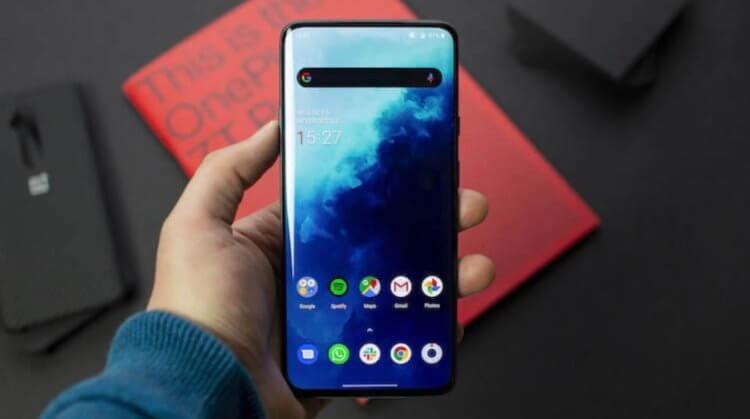
I'd like to see a new smartphone from this manufacturer rather.
OnePlus doesn't make many lines of smartphones. Therefore, we are waiting for his presentation every time. We are also waiting to be shown a new iPhone or Google Pixel. All because of the increased interest. Companies are willing to take advantage of this and within a few months begin to actively stir up interest with small leaks. If you still believe that they are all random, I hasten to disappoint you. I talked a lot with company representatives and only once again became convinced that most of these leaks are controlled. Photos and samples go to the side with the consent of the manufacturer.
Over the past few weeks, we have known a lot about OnePlus 8 pricing, as well as preparations for the launch of a cheap successor to the OnePlus X. Someone said it would be called the OnePlus Z, but most likely the OnePlus 9 Lite. In any case, we will find out about all this on April 14th. At 11:00 am ET, to be precise. In Moscow at this moment it will be 19:00. It was at this time that the presentation of new products was scheduled.
This year, the novelty will debut earlier than the seventh generation of OnePlus last year. Then the presentation took place in mid-May. Perhaps this year the company wants to show the smartphone earlier due to the coronavirus pandemic in order to bring more attention to it. Or maybe the reason is the upcoming Honor 30 Pro and Google Pixel 4a, which the company may consider as direct competitors.
Although we have the exact date of the OnePlus 8 presentation, it is too early to talk about when it will go on sale. Despite the fact that China has already begun to recover from the COVID-19 epidemic, many companies' factories inside the country are still closed. Even if some of them are opened, it will still be difficult to start production due to the fact that smaller factories that will still be closed will not be able to supply components.
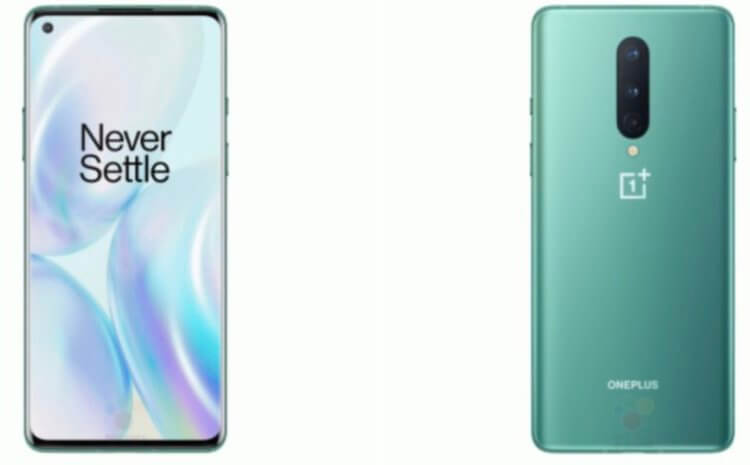
According to the leaks, these are official OnePlus renders.
In addition, restrictions will be imposed on logistics. Delivery within China will work more or less normally, but smartphones are unlikely to start shipping to other countries very soon. Gray dealers will also be powerless, since air traffic, most likely, will not improve tomorrow either.
I would say that it is not worth waiting for OnePlus 8 in Russia and Europe before the end of May. With luck, smartphones will start arriving earlier, but this is unlikely. The question is also what will be the demand for them.
Against this background, the position of the company becomes unenviable. Considering that she only makes money by selling essentially one model of a smartphone, such a drawdown will hurt her. Users are waiting for the new product and stopped buying OnePlus 7. The company planned to receive income around this time, but it has been postponed for now. You can make some money in China, but for OnePlus, the North American and European markets are much larger.
Last year, OnePlus released a simple version for some countries, and Pro for others. Perhaps this time they will be able to somehow level production problems using this scheme. In any case, we will find out about this on April 14th.
At the moment, the most likely characteristics are those that we talked about earlier. The Pro version will be powered by Snapdragon 865, 12 GB of RAM and at least 256 GB of internal storage. The device will receive Android 10 out of the box with the possibility of further updating. The maximum version will cost almost $ 900.

Perhaps OnePlus 8 will come in this color.
The OnePlus 8 version will not receive 12 GB of RAM (maximum 8) and IP68 water protection. It will also have a smaller screen diagonal. Otherwise, the characteristics will be similar, and the price will be approximately $ 500-600, depending on the version.
The Lite version of the OnePlus 8 will be quite simple. Although some analysts still doubt its release. It seems to me that it will be, and its price will be about $ 400. Otherwise, there is no point in releasing it.
I have spoken out a few times about OnePlus and how I feel about it. In short, I don't like the fact that the company has begun to produce full-fledged flagships, but at the same time it is actively promoting the image that it wants to give the user top-end hardware for a penny.
In the beginning, this was relevant, because smartphones were really produced almost at a loss. Now OnePlus has a foothold in the market and makes very good smartphones for a lot of money. We must somehow stop remembering the past.
If this year there is still a Google Pixel with a simpler hardware, which I already talked about, I will think three times about which to take. Pixel 5 for $ 800 or OnePlus in the mid-range for about the same money. I'm not sure if the choice will be in favor of the Chinese company. But I will repeat myself. Her smartphones are really cool.
